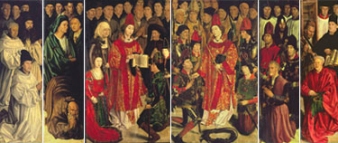Portugal
is a work of art. It inspires those who pass through it. Throughout
History, painters, sculptors and architects have engraved their genius
on the stones of the cities, the ceilings of the churches, the walls of
the palaces. But its inspiration has not been lessened with the passing
of time. From stage to catwalk, photographic studios to
architects' offices, cinema screens to the great names of contemporary
painting and sculpture, Portugal continues to sign its name on some of
the best works of art being made in Europe.
- Cinema
- Photography
- Painting and Sculpture
- Theatre
- Fashion
- Design
Cinema
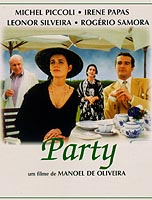
Portuguese cinema has its own very particular characteristics and, despite not having the media presence of the major American productions, still has its own small, but loyal, legion of fans throughout Europe. It is a type of cinema de auteur, which is more intimate and aimed at a specific public. The director Manoel de Oliveira, creator of films such as «Amor de Perdição» (Love of Perdition), «Francisca», «Canibais»(Cannibals) ou «O sapato de cetim» (The satin shoe) is, without doubt, the most representative name in Portuguese cinema in the world and one of the directors to win most awards in international festivals, such as those of Cannes and Venice.
However, there are also others who have also contributed to the making of Portuguese films. Examples include Fonseca e Costa, António Pedro de Vasconcelos, João César Monteiro, João Botelho, João Mário Grilo, Joaquim Leitão and Teresa Villaverde, who have been deserving of both the public's applause and the critics' pleasure.
To know more:
Camoes Institute: Cinema
Institute for Cinema, Audiovisuals and Multimedia
Photography

Photography
gained a place in the world of Portuguese contemporary art in the
1980s. In the 1990s it definitely took its place as a major art form.
Names such as Paulo Nozolino, Jorge Molder and Gérard Castello-Lopes
are nowadays unquestionably references for the work of a new generation
which includes Augusto Alves da Silva, Daniel Blaufuks, João Tabarra
and José Manuel Rodrigues.
To know more:
Portuguese Centre of Photography
Visual Arts Centre
Among the many treasures kept at the National Museum
of Ancient Art, there is one that is very special: the «Saint Vincent
Panels». This is a work of art which was painted in the 15th Century by
Nuno Gonçalves, and which is considered by many as one of the most
important collective portraits in Portugal, imbued with symbolism and
mystery. This masterpiece, dominated by the figure of Saint Vincent,
has been the subject of many theses and controversies. However, as
regards what the sixty figures in the painting represent, opinion is
unanimous: it is a unique painting, the highlight of which is superb
characterisation and great mastery of composition.
Nuno
Gonçalves is thus considered today as one of the most brilliant
geniuses, not only from within the history of Portuguese, but also
European, painting. Curiously, Nuno Gonçalves and his work were sunk in
anonymity for more than four centuries until they finally came to be
admired, studied and given the status of supreme icons of Portuguese
culture.
Throughout the centuries Portuguese art has been
deeply affected by artists such as Álvaro Pires de Évora (16th
Century), Grão Vasco and Josefa de Óbidos, (17th Century) and Vieira
Portuense (18th Century). The 19th Century was dominated by artists
such as Silva Porto, Columbano, Souza Pinto and Malhoa, along with many
others.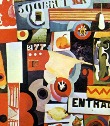
The
belated recognition which affects so many artists appears to have been
the lot of some of the greatest names in Portuguese art. Amadeo de
Sousa-Cardoso, one of the key names in 20th Century painting, and who
died in 1918 at the age of only 31, was also almost unknown until a few
decades ago, when his paintings started to awaken true passion. Some
months ago, an exhibition dedicated to the painter and curated by the
Calouste Gulbenkian Foundation was a magnificent success. So many
people wanted to see the exhibition on the last day and were waiting to
get into the Foundation, that, in an inedited gesture, the exhibition
doors were kept open all night so that everyone would have the chance
to admire the paintings of Sousa-Cardoso.
Someone who never
complained of not being understood and admired in his lifetime was
Almada Negreiros. This charismatic figure is perhaps the most popular
and well-known in the media - even to the less specialised public -
when talking of 20th Century Portuguese art. A century, what is more,
that Almada Negreiros (1883-1970) spanned. His popularity is based in
large part on the wisdom with which he managed to ally a profound
understanding of the values of modern times to a fondness for
traditional aesthetic and ideological values. A difficult balancing
act, which would provide him, like no other Portuguese artist of his
time, with a visibility which was also ensured by the extensive work
which he produced: plastic, poetic, literary and theoretical, as shown
in his paintings and in design, ballet, poetry and prose, in essays,
and in theoretical and critical reflection.
Unforgettable
also is the work of Maria Helena Vieira da Silva, whose work is
permanently on show at the museum of the Vieira da Silva-Arpad Szenes
Foundation in Lisbon, which was established after her death in 1992. A
painter of the so-called «Second Paris School», Vieira da Silva went at
an early age to study in France and ended up living there all her life,
except for a short sojourn in Brazil during the Second World War. Her
work, marked by essentially urban themes, showed a concern for
space and depth from the earliest days. 
Also
a guaranteed success are the exhibitions of Paula Rego. This
painter, who has lived in London since the 1990s and who once said: «I
paint to give a face to fear», is nowadays one of the most recognised
names in national and international art. She was further recently
considered in England as one of the four best living painters in the
world. Her work, which has been jokingly referred to as «delirious
narrative figures which inhabit disturbing personal and feminine
universes», has the special ability to perturb and bewitch. It is
strange and mysterious. At certain moments there is a dizzying
sweetness. At others, a scary aggressivity. For Raquel Henriques da
Silva, Professor of the History of Art at the Faculty of Social and
Human Sciences of the New University of Lisbon, Paula Rego «is an
artist who has decided, at an advanced stage of her career, to do just
what she feels like doing. And what she feels like doing is telling
stories through painting.»
However,
Portuguese contemporary art is not just made up of these names. There
are others, such as Júlio Pomar, António Dacosta, Ângelo de Sousa,
Mário Cesariny, Eduardo Batarda, Julião Sarmento, Ilda David, Graça
Morais, Pedro Cabrita Reis, Calapez, Ana Vidigal, Fernando Calhau, and
Álvaro Lapa, who are some of the key figures in contemporary Portuguese
art and whose works can be admired in the principal national museums
and galleries. 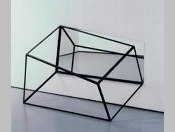
João
Penalva, Miguel Palma, Paulo Mendo, João Paulo Feliciano, Olaio,
Toscano, Susana Mendes da Silva and Francisco Tropa, as well as many
others, are also noteworthy on the national artistic scene. Using
mixed-media installations, ideally video, photography, sound and
countless new electronic technologies, these artists are working on a
form of art which is still little understood by the layperson but
lauded by the critics.
In the area of sculpture, in which the
role of Soares dos Reis (1847-1889) is unforgettable, nowadays there
are sculptors such as Jorge Vieira, José Pedro Croft, Rui Sanchez and
Rui Chafes, all with careers consolidated at both a national and
international level. There is a further group of female sculptors who
are constantly receiving critical praise, such as Gabriela Albergaria,
Fernanda Fragateiro, Patrícia Garrido and Joana Vasconcelos.
To know more:
Calouste Gulbenkian Foundation: Calouste Gulbenkian Collection
Calouste Gulbenkian Foundation: Museum of Modern Art
Museu do Chiado: National Museum of Contemporary Art
Institute of Arts
Belem Cultural Centre
Serralves Foundation
Soares dos Reis National Museum
Theatre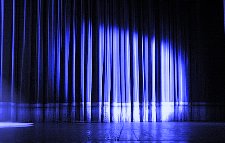
Portuguese
theatrical tradition is lost in time. Perhaps inherited from the
Romans, who built amphitheatres from the North to the South of the
country and transmitted their love for stage arts to the Portuguese, be
it tragedy or comedy. What is certain is that in the 16th Century,
right in the heart of the Discoveries period, the King D. Manuel would
never miss a piece by Gil Vicente (1465-1536), today considered as the
«father» of Portuguese theatre. His plays (called autos) mirrored as
nothing else did the society of the time and even today Portuguese
students, when studying his work, enjoy the sayings and wordplay of
such different characters as the Jew, the Nobleman, the Tattler, the
Devil, the Priest or the Sailor.
In 1587 António Ferreira (1528 - 1569) wrote the first Portuguese Renaissance Classical tragedy, Castro, inspired by the mutual love of D. Pedro I and D. Inês, which was translated into English in 1597 and, at a later date, into French and German.
Interest in the theatre grew as time went by and in 1755 D. José opened the Paço da Ribeira Royal Theatre, better known as the Tagus Opera, as it was located by the river, and it was the most luxurious and innovative building of its kind in Europe. Unfortunately, it was completely destroyed seven months later after the 1755 Earthquake.
Later, it was to be Almeida Garrett (1799-1854), founder of the «General Conservatory of Dramatic Art» and the D. Maria II National Theatre in Lisbon, who completely revolutionised Portuguese cultural policies with his work «Frei Luís de Sousa», one of the great Portuguese plays..
In the present day, theatre is constantly changing
in Portugal and there is great diversity, both in terms of companies
and in terms of festivals. With regard to existing theatre groups,
there are various groups which have made their presence felt in
contemporary Portuguese theatre and which have refreshed its outlook,
which until the 1990s was dominated by charismatic directors from the
«independent groups». Organized theatre festivals include Festival
Alkantara, the Almada Festival, FITEI (Porto) and Citemor
(Montemor-O-Velho), which play host to what is best in theatre both in
Portugal and in the world.
To know more:
National Theatre Museum
Fashion
Twice
a year, Lisbon transforms itself into one big catwalk where literally
the latest fashions of Portuguese designers are on show. «Moda Lisboa»
or «Lisboa Fashion Week» - now into its 27th year - are ever more
important in the international fashion calendar. A little more than
three decades old, Portuguese fashion has found its own space and is
nowadays a major feature of national artistic production. In Porto,
«Portugal Fashion» brings together the textile industry and the latest
trends in fashion, with Portuguese designers using Portuguese textiles
and the industry utilising the talents of these stylists. Names such as
Ana Salazar, Manuel Alves, José Manuel Gonçalves, José António Tenente,
Fátima Lopes, Maria Gambina and Miguel Vieira have been a reference for
a younger generation of new talents which includes Alexandra Moura,
Lara Torres and Pedro Mourão.
To know more:
Lisboa Fashion
Portugal Fashion
Design
If
you wish to learn about the best and most innovative in Portuguese
design, our suggestion is to start by going for a walk in the Bairro
dos Santos quarter in Lisbon, where you will find most of the shops and
schools of design huddled together and where on the last Thursday of
each month the day extends until 10 at night, in a lively scene which
includes afternoon shows, open shops and restaurants with exclusive
menus. The district is already known as the «Design District» and is
living proof of the talent, imagination and will of Portuguese artists.
Names such as Marco Sousa Santos, Fernando Brízio, Miguel Vieira
Baptista, Ricardo Mealha and Ana Cunha are some of the heirs to
Portuguese design and who cite Daciano da Costa as a pioneering spirit
and one of the most important Portuguese designers of the 20th
Century.
To know more:
Experimenta Design
